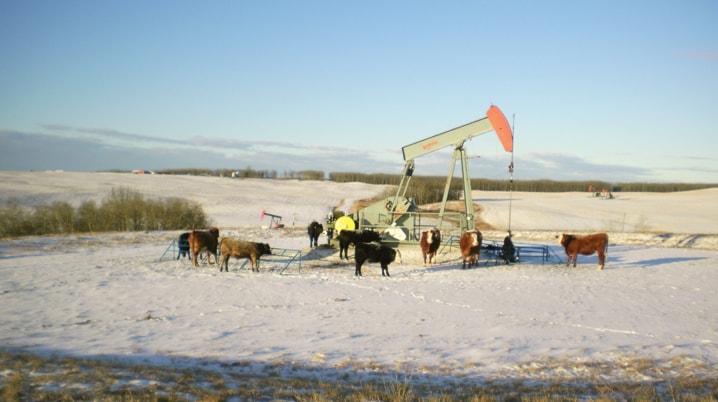Ponoka-area cattle farmers say their water well is getting increasingly more contaminated with “extremely explosive and deadly” hydrocarbons and sour gas — and Alberta’s energy regulator isn’t acting quickly enough to protect them.
Shawn and Ronalie Campbell are concerned that their water well is now 10 times as polluted as when it was tested several years ago.
The couple haven’t been using the contaminated well on their property for drinking, but only stopped showering and laundering clothes in the water this fall when the latest test results became known.
Explosive methane and other associated hydrocarbon gases in the Campbells’ water well were shown to have increased to 500,000 parts per million in testing done last July.
Ronalie said recently that this compares to 87,900 ppm in 2009, 67,900 ppm in 2007, and 7,840 ppm in 2006.
Hydrogen sulphide (H2S) was recently found to be at 88.5 ppm in July, compared to 9.9 ppm in 2006.
The current rate is more than eight times higher than the safe level, which is below 10 ppm, said Ronalie, who believes the depth of the contamination indicates it was caused by oil and gas activity in the area.
But the Energy Resources Conservation Board (ERCB) sees no evidence of this.
“Fingerprint” testing conducted on nine oil and gas wells operating in the vicinity showed no exact match with the hydrocarbons found in the Campbell’s well, said ERCB spokesperson Darin Barter, who added, “There’s no direct link.”
Ronalie disagrees, saying a report confirmed the well is suffering “thermogenic impact” from deep source gases that are being tapped into by energy companies in the area.
A 2009 report commissioned by the ERCB accepts that deeper gas migration could have occurred by historic fractures created by a former resource company called PanCanadian in the 1980s, she said. (Hydraulic fracturing, or fracking, is when high-pressure fluid is injected deep into rock layers to open up new channels and increase the extraction rates of fossil fuels.)
If methane gases from different depth levels mixed together in the water, then the combination might not be traceable to a particular source, Ronalie suggested.
“I don’t care what energy well it is, at this point. We know it’s from an energy source, so they should say, ‘All of you have to clean this up,’ ” added Ronalie, who’s disappointed by the ERCB’s position.
She’s particularly upset that the ERCB is advising them to fix the problem, instead of industry doing it.
One suggestion from the energy regulator is that the Campbells should build a venting shed to heat the well water, allowing noxious gases to evaporate into the atmosphere. But Ronalie isn’t even sure it would be legal to vent such concentrated poisonous gases.
“What if somebody got knocked out walking by?”
She noted the sour gas would be particularly dangerous if inhaled. And methane is explosive, said Ronalie, adding a venting shed blew up in Northern Alberta.
According to Barter, the hydrogen sulphide found in the Campbells’ well water must be naturally occurring from bacteria since the closest sour gas well is 10 km away from their property.
But Ronalie believes bacteria can’t produce such high concentrations of sour gas — “They (ERCB officials) know that.” She noted that all of the sweet gas wells in the vicinity produce low amounts of sour gas, too.
This is a case of the regulator protecting industry instead of the public, she said.
Barter believes the ERCB must be doing something right if both landowners and industry are complaining that the regulator isn’t in their corner.
He disagrees that the ERCB isn’t doing enough for the Campbells, saying that ongoing testing was offered of their contaminated water well.
But Ronalie said the well has been studied long enough and action is needed.
While the Campbells get their drinking water from a less productive, unpolluted well on their property, Ronalie said there’s no other drinking source for their cattle once the cows are moved back from where they have been kept on another quarter-section.
She said exposure to sour gas is known to cause miscarriages and calf deformities.
lmichelin@www.reddeeradvocate.com
— copyright Red Deer Advocate
